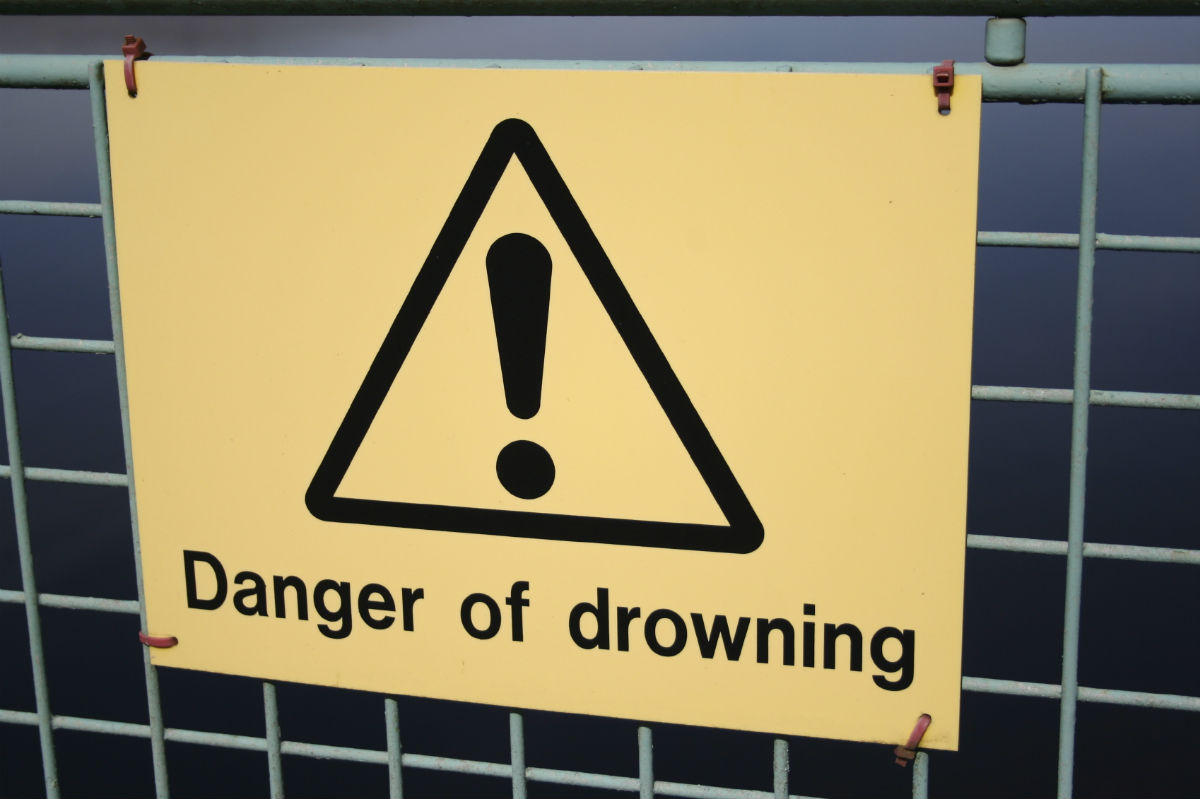Drowning is a fatal injury that a worker can sustain as a result of a work-related accident.

Drowning is the process of suffering respiratory impairment from immersion or submission in liquid. Another term that is commonly used in the context of work-related injuries is near drowning, which refers to a condition that involves water inhalation and unconsciousness following a drowning event. It can lead to secondary complications or even death for up to 72 hours after the drowning event.
Occupations with a Higher Risk of Drowning
Work-related drowning can either occur in water or in other liquids, which is referred to as industrial drowning. Unfortunately, drownings take place suddenly and rapidly and the worker is often taken by surprise and has no time to react. The Occupational Injury and Illness Classification System of the Bureau of Labor Statistics classifies drowning under traumatic injuries and disorders. Drowning is not a common work-related accident. It can occur in some types of jobs, which include:
- construction
- workers in fish hatcheries
- commercial fishermen
- longshoremen
- dock workers
Injuries Resulting From Drowning
Work-related drowning is extremely serious and the consequences are usually grim. Most drownings result in the death of the worker but if the worker survives, various types of injuries can occur. Around a third of drowning survivors suffer moderate to severe neurologic sequelae. It is defined as biochemical, electrical, or structural abnormalities in the spinal cord, brain, or nerves. Common signs and symptoms are:
- loss of sensation
- poor coordination
- muscle weakness
- paralysis
Drowning-Related Injuries and Workers’ Compensation
If a worker survives a near-drowning incident, he or she may need prolonged treatment. The injured worker can file a work injury claim to cover medical expenses and lost wages. In the event of a worker’s death, the family members can receive death benefits. If you need to know more about your legal rights, call a St. Louis workplace injury lawyer from The Law Office of James M. Hoffmann. Call us at (314) 361-4300 for a free consultation.
Workplace Injury and Accident Causes
Asbestos Exposure
Asbestos Removal
Second Hand Asbestos Exposure
Sexual Assault Workplace
Physical Assault at Workplace
Workplace Injuries Assembly Line
At Fault Accident
Workplace Attack
Benzene Exposure
Injured on Lunch Break
Building Collapse
Workplace Bullying
Chemical Exposure in the Workplace
Chemical Hazards in the Workplace
Cold Stress in the Workplace
Combustible Dust Explosion
Computer Use
Construction Site Accident
Conveyor Belt Accident
On the Job Injury Cause by Coworker
Crane Accident
Injuries from Desk Jobs
Diesel Exhaust Fumes Exposure
Digging Injury
Breaking Company Policy
Drowning at Work
Workplace Drug Use
Electrical Workplace Accidents
Elevator Accident
Equipment Accident
Ergonomics in the Workplace
Excessive Overtime
Workplace Explosion
Extreme Danger
Fall at Work
Fire in the Workplace
Slicer Accident
Forklift Accident
Walk in Freezer
Gas Pipeline Accident
Hard Work
Workplace Hazardous Substances
Hazardous Equipment in the Workplace
Heavy Machinery Accident
Horseplay in the Workplace
Danger at Workplace
Insomnia in the Workplace
Jumping Accident
Ladder Falls at Work
Loading Dock Accident
Machinery Accident Workplace
Equipment Failure Accident
Mining Accident
Mold in the Workplace
Nail Gun Accident
Workplace Noise
Non Collision Accident
Heavy Objects
Workplace Office Equipment
Opioid Use
Injury at Work Due to OSHA Violation
Overexertion Injuries at Work
Use of Pain Killers
Power Tool Injury
Inadequate PPE
Repetitive Motion Injuries in the Workplace
Mansfield Bar
Scaffolding Accident
Secondhand Smoke in the Workplace
Side Effects
Silica Exposure
Sleep Disorder
Slip and Fall Injuries in the Workplace
Stairs at Work
Struck by a Vehicle
Tar Fumes
Toxic Chemical Exposure
Toxic Fumes in the Workplace
Car Accident While Working
Trench Collapse
Trips at Work
Unsafe Working Conditions
Workplace Violence
Welding Injury
Winter Hazards in the Workplace
Working Shifts
